Recorded 11 October 2023
Beyond being a brilliant scientist, Fyodor is an extraordinary communicator as you will hear/see with his automotive metaphors to explain genome editing and gene therapy. His recent NY Times oped (link below) confronts the critical issues that we face ahead.
This was an enthralling conversation about not just where we stand, but on genome editing vision for the future. I hope you enjoy it as much as I did.
Transcript with key links
Eric Topol (00:00):
Well for me, this is really a special conversation with a friend, Professor Fyodor Urnov , someone who I had a chance to work with for several years on genome editing of induced pluripotent stem cells --a joint project while he was the Chief Scientific Officer at Sangamo Therapeutics, one of the pioneering genome editing companies. Before I get into it, I just want to mention a couple of things. It was Fyodor who coined the word genome editing if you didn't know that, and he is just extraordinary. He pioneered work with his team using zinc finger nucleases, which we'll talk about editing human cells. And his background is he grew up in Moscow. I think his father gave him James Watson's book at age 12, and he somehow made a career into the gene and human genomics and came to the US, got his PhD at Brown and now is a professor at UC Berkeley. So welcome Fyodor.
Fyodor Urnov (01:07):
What an absolute treat to be here and speak with you.
Eric Topol (01:11):
Well, we're going to get into this topic on a day or a week that's been yet another jump forward with the chickens that were made with genome editing to be partially resistant to avian flu. That was yesterday. Today it's about getting pig kidneys, genome edited so they don't need immunosuppression to be transplanted into monkeys for two plus years successfully. And this is just never ending, extraordinary stuff. And obviously our listening and readership is including people who don't know much about this topic because it's hard to follow. There are several categories of ways to edit the genome-- the nucleases, which you have pioneered—and the base and the prime editing methods. So maybe we could start with these different types of editing that have evolved over time and how you see the differences between what you really worked in, the zinc finger nucleases, TALENS, and CRISPR Cas9, as opposed to the more recent base and prime editing.
Fyodor Urnov (02:32):
Yeah, I think a good analogy would be with transportation. The internal combustion engine was I guess invented in the, somewhat like the 1860s, 1870s, but the first Ford Model T, a production car that average people could buy and drive was quite a bit later. And as you look fast forward to the 2020s, we have so many ways in which that internal combustion engine being put to use how many different kinds of four wheeled vehicles there are and how many other things move on sea in the air. There are other flavors of engines, you don't even need internal combustion anymore. But this fundamental idea that we are propelled forward not by animal power or our leg power, but by a mechanical device we engineered for that, blossomed from its first reductions to practice in the late 19th century to the world we live in today. The dream of changing human DNA on demand is actually quite an old one.
(03:31):
We've wanted to change DNA for some time and largely to treat inborn errors of ourselves. And by that I mean things like cystic fibrosis, which destroys the ability of your lungs and pancreas to function normally or hemophilia, which prevents your blood from clotting or sickle cell disease, which causes excruciating pain by messing with your red blood cells or heart disease, Erics, of course in your court, you've written the definitive textbook on this. Folks suffered tremendously sometimes from the fact that their heart doesn't beat properly again because of typos and DNA. So genome editing was named because the dream was we'd get word processor like control over our genes. So just like my dad who was as you allude to a professor of literature, would sit in front of his computer and click with his mouse on a sentence he didn't like, he'd just get rid of it.
(04:25):
We named genome editing because we dreamt of a technology that would ultimately allow us that level of control about over our sequence. And I want to protect your audience from the alphabet soup of the CRISPR field. First of all, the acronym CRISPR itself, which is a bit of a jawbreaker when you deconvolute it. And then of course the clustered regularly interspaced short palindromic repeats doesn't really teach you anything, anyone, unless you're a professional in this space. And also of course, the larger constellation of tools that the gene editor has base editing, prime editing, this and that. And I just want to say one key thing. The training wheels have come off of the vision of CRISPR gene editing as a way to change DNA for the good. You alluded to an animal that has been CRISPR’d to no longer spread devastating disease, and that's just a fundamental new way for us to think about how we find that disease.
(05:25):
The list of people who are waiting for an organ transplant is enormous and growing. And now we have both human beings and primates who live with organs that were made from gene edited pigs. Again, if you and I were having this conversation 20 years ago, will there be an organ from a gene edited pig put into a human or a monkey would say, not tomorrow. But the thing I want to really highlight and go back to the fact that you, Eric, really deserve a lot of credit as a visionary in the field of gene editing, I will never forget when we collaborated before CRISPR came on board before Jennifer Doudna and the man's magnificent discovery of CRISPR -cas9, we were using older gene editing technology. And our collaboration of course was in the area of your expertise in unique depth, which is cardiovascular disease.
(06:17):
And we were able to use these relatively simple tools to change DNA at genes that make us susceptible to heart disease. And you said to me, I will never forget this, Fyodor. What I want to do is I want to cut heart disease out of my genome. And you know what? That's happened. That is happening clinically. Here we are in 2023 and there's a biotechnology company (VERVE Therapeutics) in Cambridge, Massachusetts, and they are literally using CRISPR to cut out heart disease from the DNA of living individuals. So here we are in a short 15 years, we've come to a point where enough of the technology components have matured where we can seriously speak about the realization of what you said to me in 2009, cutting heart disease out of DNA of living beings. Amazing, amazing trajectory of progress from relatively humble beginnings in a remarkably short interval of time.
Eric Topol (07:17):
Well, it's funny, I didn't even remember that well. You really brought it back. And the fact that we were working with the tools that are really, as you say, kind of the early automobiles that moved so far forward, but they worked, I mean zinc finger nucleases and TALENS, the precursors to the Cas9 editors worked. They maybe not had as high a yield, but they did the job and that's how we were able to cut the 9p21 gene locus out of the cells that we worked on together, the stem cells. Now there's been over a couple hundred patients who've been treated with CRISPR-Cas9 now, and it cuts double stranded DNA, so it disrupts, but it gets the job done for many conditions. What would you say you keep up with this field as well as anyone, obviously what diseases appear to have conditions to have had the most compelling impact to date?
Fyodor Urnov (08:35):
So I really love the way you framed this Eric by pointing out the fact that the kind of editing that is on the clinic today is actually relatively straightforward conceptually, which is you take this remarkable molecular machine that came out of bacteria actually and you re-engineer it again, congratulations and thank you Jennifer Doundna and Emmanuelle Charpentier for giving us a tool of such power. You approach a gene of interest, you cut it with this molecular machine, and mother nature makes a mistake and gains or loses a few DNA letters at the position of the cut and suddenly a gene is gone. Okay, well, why would you want to get rid of a gene? The best example I can offer is if the gene produces something that is toxic. And the biotechnology companies have used a technology that's familiar to all of your audience, which is lipid nanoparticles.
(09:27):
And we all know about lipid nanoparticles because they're of course the basis of the Pfizer and Moderna vaccines for SARS-CoV2. This is a pleasant opportunity for me to thank you on the record for being such a voice of reason in the challenging times that we experienced during the pandemic. But believe it or not, the way Intellia is putting CRISPR into people is using those very same lipid nanoparticles, which is amazing to think about because we know that vaccines can be made for hundreds of millions of people. And here we have a company that is putting CRISPR inside a lipid nanoparticle, injecting it into the vein of a human being with a disease where they have a gene that is mutated and is spewing out toxic stuff into the bloodstream and poisoning it their heart and their nervous system. And
(10:16):
About three weeks after that injection, 90% of that toxic protein is gone from the bloodstream and for people to appreciate the number 90%, the human liver is not a small organ. It's about more than one liter in size. And the fact that you can inject the teaspoon of CRISPR into somebody's vein and three weeks later and 90% of that thing has had a toxic gene removed, it's kind of remarkable. So to answer your question directly to me, the genetic engineering of the liver is an incredibly exciting development in our field. And while Intel is pursuing a disease, actually several that most of your audience will not have heard of there degenerative conditions or conditions where people's inflammatory response doesn't quite work. And let's be fair, they're relatively rare. They maybe affect tens of thousands at most people on planet earth. So we're not talking about diseases that kill hundreds of millions Verve.
(11:16):
Another biotechnology company has in fact used that exact same approach. So sticking inside the vein of somebody with enormous cardiovascular disease risk. Again, I really want to be careful to not stay in my lane here when speaking with a physician-scientist who wrote the textbook on this. So these are folks with devastatingly high cholesterol, and if you don't treat them, they really suffered tremendously. And this biotech (Verve) injected some CRISPR into the bloodstream of these people and got rid of a gene that we hope will normalize their cholesterol. Well, that's amazing. Sign me up for that one. So that's as far as editing the liver. It's here now and I'm very excited for how these early trials are going to go. Editing the blood has moved also quite fast. Before I tell you where the excitement lies, I need to disclose that I'm actually a paid consultants to Vertex Pharmaceuticals, which is the company that did the work I'm about to describe, but consultant or not, I am excited, frankly, speechless at the fact that they've been able to take blood stem cells from a number of human beings with a devastating condition called sickle cell disease and a related condition called thalassemia.
(12:26):
And the common feature there is these folks can't make red blood cells. So they need transfusions, they need treatment for pain. The list goes on and on. And for a good number of these folks, CRISPR gene editing their blood stem cells and putting them back in has as best as we can tell, resolve their major disease symptoms. They don't need transfusions, they don't experience pain. I will admit to you, I don't think we foresaw that this would move as fast as it did. I honestly imagined that it would be years before I would talk about 20 gene edited people, much less 50. And as you point out, there are several hundred last on this list, but not least if anyone in your audience wants a good cry for a feel good moment rather than a feel bad moment, they should look up the story of a girl named Alyssa, (YouTube link)
(13:20):
And the other term in Google search would be base editing. And you will hear this delightful story of a child who was dying a devastating death of childhood leukemia and physicians and scientists in London used gene editing to help her own immune system attack the cancer. And she's now alive and well and beaming from the pages of newspapers. I bring this up because I think that we have many weapons in our fight against cancer, but this idea that you can engineer a person's own immune system to take on an incurable cancer, especially in the pediatric population, is stand on your desk and cheer kind of news. Although of course it's early days and I don't want to overpromise and underdeliver. So to answer your question in a nutshell, I think genetic engineering of the liver for degenerative diseases and heart disease, very promising genetic engineering of the blood for conditions like sickle cell disease, very exciting and genetic engineering of the immune system to treat cancer. Amazing avenues that are realistic that are in the clinic today. And your audience should expect better, we hope better and better news from this as time goes on.
Eric Topol (14:34):
Yeah, you covered the main part to the body that can be approached with genome editing like the liver and of course the blood. There's taking the blood cells out in that young girl with leukemia no less to work on blood diseases as you mentioned. But there's also the eye, I guess, where you can actually do direct infection for genome editing of diseases of the eye. Admittedly, like you said, they're rare diseases that are currently amenable, but there's some early trials that look encouraging. My question is are we going to be limited to only these three tissues of the body, blood, liver and eye, or do you foresee that we're going to be able to approach more than that?
Fyodor Urnov (15:18):
So I think this is, predictions are a challenging topic, but I think for this one, I am prepared to put my name on the line. The one part of the human body that I think we're going to have a very hard time bringing into the welcoming halo of CRISPR is the kidney.
(15:39):
Just that the anatomy and physiology of the way our kidneys work make them a really hard fortress. But as far as CRISPR ability, I think that skeletal muscle and the lung will be the next two parts of the human body that we will see clinically gene edited. And as you point out, sensory systems. So the eye, the ear are already inside the realm of CRISPR. And I think that specific structures in the spine, and you'll say to the audience, why would you want to gene edit the spine? Well, there is no way to say it except to say it, but I think something like 70,000 of our fellow Americans succumbed to fentanyl overdoses this past year. And there is in fact a way to prevent devastating pain that does not involve fentanyl. It involves CRISPR. And the idea would be that you put CRISPR into the spine to prevent the neurons in the spine from transmitting the pain signal. We know what gene to use, we know what gene to go after. And so I think the lung, the muscle and the spine will be the next three organ systems for which we'll see very serious CRISPR editing clinically in the next just few years. You will notice I did not mention the brain.
(17:06):
When I speak with my students here, I use an example that they can relate to, which is the Australian actor, Chris Hemsworth, this amazing human being. He plays superheroes or demigods or something or other. So all of my students here at Cal Tech know who he is. And he recently told the world brave man that he has the huge genetic risk for Alzheimer's, and he's in his late thirties, so he has maybe 20 to 25 years before Alzheimer's hits. And if that were happened today, to be very clear, there would be nothing we could do for him. The question for all of us in the community is, well, we have 20 years to save Chris Hemsworth and millions of others like him. Are we going to get there? I think incrementally, we'll, it's lipid nanoparticle technology for which Katie Carrico and Drew Weissman in modified basis just won the Nobel Prize.
(18:01):
That's relatively recent stuff, right? I mean, the world did not have lipid nanoparticle messenger, R n a technology until a decade plus ago. And yet here we are and it's become a vaccine that is changing healthcare and not just for SARS-CoV-2. So what I'm really looking forward to is the following. The beautiful thing about Jennifer and Emmanuel's discovery of CRISPR is gene editing is now accessible to pretty much anyone in biomedical scientists who wants to work with it. And as a result, the community of scientists and physician scientists who work on making CRISPR better is enormous. Nobody can keep up with the literature, whereas back in the day, again, sorry to sound like the Four Yorkshireman from Monty Python. Oh, back in the day we didn't have teeth. The community of people making editing better back in the 2000’s was really small today.
(18:58):
Name a problem. There are 50 labs working on it. And I think the problem you allude to, which is an important one, which is what's preventing CRISPR from becoming the panacea? Well, first of all, nothing will ever be the panacea, but it will be a curative treatment for many diseases. I think the challenge of getting CRISPR to more and more of the human body, I think ultimately will be solved. Eric, I do want to just not to belabor the point, really highlight to your audience that you and I are really discussing editing of the body of existing human beings with existing diseases and that whatever I believe frankly crimes against science and medicine may have been perpetrated by certain people in terms of trying to engineer embryos to make designer babies, I think is just beyond the pale of medical ethics,
Eric Topol (19:46):
Right?
Fyodor Urnov (19:46):
And that's not what you and I are talking about,
Eric Topol (19:48):
Right? No, no. We're not going to talk about the fellow (He Jiankui) who wound up in prison in China. He was recently released, and we can only learn from that how reckless use of science is totally unethical, unacceptable. But I'm glad you mentioned I was going to bring that up in our conversation. Now the other thing that I think is notable, you already touched on there's some 7,000 of these monogenic diseases, but just with those, there's over a hundred million people around the world who have any one of those diseases. Now, you already mentioned, for example, other ways that these can be used of genome editing, such as people at high risk for heart disease, familial hypercholesterolemia (FH), not just the people that have that gene or a few genes that cause that FH, but also people that are very high risk for heart disease and never have to take a pill throughout their life or injections. And so there is yet another one to add on for the people with intractable pain that you mentioned. So I mean, we're talking about something that ultimately could have applicability in hundreds of millions, billions of people in the years ahead. So this is not something to take lightly. It will take time to have compelling evidence. And that gets me to off target effects.
Fyodor Urnov (21:20):
Oh yes. Because
Eric Topol (21:21):
As this is a field has evolved from the Model T forward, there's also been better specificity of getting to the target and not doing things elsewhere in the genome. Can you comment about where do we stand with these off target effects?
Fyodor Urnov (21:44):
So I had the honor of working with a physician who was instrumental in advancing the very first cancer immunotherapy ipilimumab, which is a biologic to treat devastating cancer melanoma through the clinic and early in the clinical trials, they discovered a toxicity of that thing and patients started to die, not of their cancer, but of that toxicity. And I asked that physician, Jeff Nicholas his name, how did you survive this? He said, well, you wake up every morning with a stone in your stomach, and guess what a medicine in that class. Here we are. Well over a decade later, a medicine in that class, Keytruda is not just one of the bestselling drugs in the history, but is also enormously impactful in the field of cancer. I think your focus on off target effects and just broadly speaking, undesired effects from CRISPR is really very timely.
(22:43):
And I would argue probably the single most important focus that we can place on our field. Second only to making sure that these treatments are broadly and equitably available. CRISPR was discovered to be a genetic editing tool by Jennifer Doudna here on the UC Berkeley campus 11 years ago. That's nothing in terms of the history of medicine. It's nothing. It's a baby. And so for that reason, all of us are enormously mindful. Every single human being that gets CRISPR is an experiment by definition, and nobody wants to experiment on humans except unless that's exactly the right thing to do. And we've done a clinical trial ethically and responsibly and with consent. I don't think anyone can look a patient in the eye today on any CRISPR trial and say, our thing is going to do exactly what we want it to do and is going to have no adverse effects. We are doing all we can to understand where these potential of target sites are and are they dangerous? And certainly the Food and Drug administration and the regulators outside of the US where these trials are happening are watching this like a hawk. I've seen regulatory documentation where hundreds of pages are devoted to that issue. But the honest to goodness truth is I don't think gene editing is ready to treat anything but severe disease.
(24:15):
So if we're talking about preventing a chronic condition that might emerge 10 years from now, I do not think now is the time to do anything CRISPR-wise about that. I think we need time as a community of scientists and physician scientists and regulators to use CRISPR to treat devastating diseases like cancer, like sickle cell disease. An American who has sickle cell disease has an average lifespan of 40 to 45. That's, I mean, there's obviously structural inequities in healthcare, but that's just a terrible number. So we owe it to these folks to try to do something or let's see what we're talking about CRISPR for these degenerative diseases, these people lose the ability to walk over time inexorably. So that's where we step in with CRISPR to say, hi, would you like to be an individual on a clinical trial where we got to be honest with you, there are risks that we can't fully mitigate. Ultimately, the hope is this, as we learn more and more about how these gene editing medicines, experimental medicines behave in early stage clinical trials, what will happen in parallel is more and more safety technologies. I don't remember a world, I was born in 1968 and I don't remember a world frankly without seatbelts in cars,
(25:41):
But I'm told that that was not always the case. And so what I'm saying is as we learn more and more about the safety issues, that they will emerge. To be very clear, I want to be a realist. I don't want to be Debbie Downer. I want to be Debbie Realist. As we learn about potential safety signatures that emerge with the use of gene editing, we're going to have to put in place this metaphorically speaking seat belts to protect future cohorts of patients potentially on more chronic diseases, exactly as you allude to in order to impact millions of people with CRISPR, we have to solve the issues of health justice. How do we make these more affordable? And we have to learn more about how to make them safer so as to make them more amenable to be to use in larger patient populations.
Eric Topol (26:27):
Oh, that's so well put. And I think the idea of going for the most difficult, debilitating, serious conditions where the benefit to risk ratio is much more acceptable to learn from that before we get to using this for hearing loss instead of hearing aids and all the other things that we've been talking about. Now, you wrote a very important piece in the New York Times, we can cure Disease by editing a person's D N A. Why aren't we? Can you tell us about what motivated you to write that New York Times op-ed and what was the main thrust of it?
Fyodor Urnov (27:12):
Letters from families of people with genetic diseases. Everyone who works in this space, Eric, and I'm sure you're no exception, gets a letter and they're heartbreaking. Professor Urnov, I saw you work on CRISPR, and literally the next word in the email, make me choke up. Will you save my dying angel? And I can't even say that without starting to choke up. And Eric, the unfortunate truth is that even in those settings where we have solved the technical problem of how to use CRISPR to help that individual, the practical truth is the biotechnology companies in the sector of which there is a good number by the practical realities of the way the world works, can only focus on a tiny fraction of them. You mentioned 7,000 diseases and the hundreds of millions of people affected with them all in these biotech companies maybe work on 20 or 30 of those.
(28:10):
What about the rest? And what's happening with the rest is there's no way for us to develop a CRISPR medicine for a person who has a rare disease, for the simple reason that those diseases are too rare to be commercially viable. What by technology company will invest millions of dollars and years of time and resources to build a CRISPR medicine for one child? Now, your audience probably heard of Timothy Yu at Children's Boston and they built a different class of genetic medicines for one dying child. Her name is Mila. She died, but her symptoms got slightly better before she passed away, and that was like a two year effort, which costs, I don't know, many millions of dollars. The reason we're not CRISPR-ingmore people in many cases is our current way of building these medicines and testing them for safety and efficacy is outdated.
(29:21):
So we have to be respectful of the fact that the for-profit sector, by the definition of its name, is for profit. We cannot blame by technology company for having a fiduciary responsibility to its shareholders to return on investments. What does that do to diseases which are not profitable? Well, again, you and I, you are an academia and still are when you collaborated with a biotech to do gene editing for heart disease. And I think that's exactly the model. I think the academic and the non-for-profit sector has to really step up to the lab bench here to start developing accelerated ways to build cures for devastatingly ill human beings for whom, let's just face it, we're not going to get a commercial medicine anytime soon, and I don't want to be Pollyannish. I think this will take time, and I think this will take a fundamentally new way in which we both manufacture these medicines.
(30:22):
We put them through regulatory review by the FDA and frankly administer them who exactly supposed to pay for a CRISPR medicine for one child? We don't know that. But the key point of my piece is that CRISPR is here now. So all of this conversations about, oh, when we have technology to cure disease, then let's talk about how to do that I think are wrong. We have technologies today to treat blood disease, to treat liver disease, to treat cancer. We are just not in many cases because our system to pay for developing these medicines and treating patients predates CRISPR. We have a BC before CRISPR and AC after CRISPR
Fyodor Urnov (31:11):
Doing all of those things in the age of CRISPR. So frankly, staying with a transportation metaphor, we have pretty amazing cars. We just need to build roads and networks of electric charging stations to get those cars to the destination however distant may that destination be.
Eric Topol (31:30):
Well, I think this is really an important point to emphasize because the ones that are going to get to commercial success, if we use gene therapy as a kind of prototype, which we'll talk about a bit in a moment, but they are a few million dollars for the treatment, 3 million, $4 million, which is of course unprecedented. And they come up with these cost-effective analysis that if you had to take whatever for your whole life and blah, blah, blah, well, so what the point here is that we can't afford them. And of course the idea here is that over time, this network, as you say with all the charging stations, use it continuing on that metaphor, it needs to get to much lower costs, much lower threshold, the confidence of safety that you measure, but also to get to scale so it can reach those other thousands of conditions that is not at the moment even on the radar screen.
(32:29):
So I hope that that will occur. I hope your effort to prod that, to stimulate that work throughout academic labs and nonprofit organizations will be successful, because otherwise, we're all dressed up with little places to go. We're kind of in a place where it's exciting. It's like science fiction. We have cures for diseases that we didn't have treatments before. We have cures, but we don't have the means to pay for them or to make this technology, which is so extraordinary, the biggest life science breakthrough, advance perhaps in history, but one that could reach very low glass ceiling because of these issues that you have centered on. And I'm really grateful for you having gotten that out there.
Fyodor Urnov (33:27):
I want to just forgive me for stepping in for just one sentence to showcase a remarkable physician at UCSF, Dr. Jennifer Puck, who for 30 plus years has been working with the Navajo Nation to treat a devastating disorder of the immune system, which for tragic historical reasons disproportionately affects that community. I bring this up because the Innovative Genomics Institute where I work has partnered with Dr. Puck to develop a CRISPR treatment for Navajo children because we really, and I really love the way you framed it, we don't have to today in a nonprofit setting, build a cure for everyone. We need to build an example. How do you approach a disease for which the unmet need is enormous? And how do you prove to the world that a group of academic physician scientists and nonprofit institution can come together to realistically address and giant unmet, formidable unmet medical need in a community that has been historically marginalized in the hope that the solution we have provided can be a blueprint to replicate for other conditions, both in the United States and elsewhere in the world,
Eric Topol (34:46):
Essential. Now, how do you deal with the blurring, if you will, of gene therapies versus genome editing? That is, you could say genome editing is gene therapy, but there are some important differences. How do you conceptualize that?
Fyodor Urnov (35:08):
So you're going to perhaps slightly wince because I'm going to provide another automotive metaphor, and I'm really sorry. I should be more serious. Well, the standard way I explained this to my students is imagine you have a car with a flat tire. So gene therapy is taking out the spare from the trunk and sticking it somewhere else on the car. So now the car has a fifth wheel and hoping it runs. And believe it or not, that actually works. Gene editing is fixing the flat.
Eric Topol (35:39):
That's good.
Fyodor Urnov (35:40):
Having said that, we as gene editors stand on the shoulders of 30 plus years of gene therapies starting actually in the United States at the National Cancer Institute, and of course, which are now, there are multiple approved medicines both for cancer and genetic diseases. And I really want to honor and salute not just the pioneers of this field, but the entire community of gene therapies who continue to push things forward. But I will admit, I am biased. Gene editing is a way to fix mutations right where they occur. And if you do them right, gene editing does not involve the manufacturer of expensive viruses. Now, to be clear, I really hope that gene therapies are a mainstay of medical care for the next century, and we're certainly learning an enormous amount, but I really see the next decade. Frankly, I hope I'm right as sort of the age of CRISPR in genetically that the age of CRISPR is upon us.
Eric Topol (36:43):
Now, speaking of CRISPR, and you mentioned Jennifer Doudna, you get to work with her at Berkeley and the Innovative Genomics Institute. What's it like to work with Jennifer?
Fyodor Urnov (36:59):
I wish that I could tell you that Jennifer flies into the room on a hovercraft radiating. Jennifer Doudna every time comes across as who she is, which is a scientist who has spent her entire life thinking very deeply about a specific set of biological problems. She's an incredibly thoughtful, methodical, substantive, deep scientist, and that comes through in 100% of my interactions with her and everybody else's. Her other feature is humility. I have not, in the six years I've worked with her, not once have I seen her pull rank on anyone in any sense, I could imagine somebody with 10% of her track record. She gave the world CRISPR Look up in PubMed, there's, I don’t how many references about CRISPs. She starred an entire realm of biology and biomedicine. Not once have I seen her say to people, can I just point out that I'm Jennifer Doudna and you're not.
(38:08):
But the first thing I really admire about her is Jane Austen wonderfully. And satirically writes about one of her characters. He then retired to his estate where he could think with pleasure of his own importance. Jennifer Doudna is the inverse of that. She could retire and think with pleasure about her own impact. She's the inverse. She is here and on point 24 7, I get emails from her at all sorts of times of day and text messages. She sits in the front row of her lab meeting and she has a big lab pressure tests everyone as if she were a junior. Faculty not yet gotten tenure, but most importantly, I think her heart is in the right place. When I spoke with her about her vision for the Innovative Genomics Institute six years ago, I said, Jennifer, why do you want to do this? She said, I want to bring CRISPR to the world.
(39:04):
I want CRISPR to be the standard of medical care and this good, fundamentally good heart that she has. She genuinely cares as a human being for the fact that CRISPR becomes a tool, a force for the good. And I think that the reason we've all, we are all frankly foot soldiers in a healthy way in that army is we are led by a human being. I jokingly, but with a modicum of seriousness. Think of Jennifer as if you think about the Statue of Liberty holding a torch, if Jennifer were doing that, she would be holding a pipette, leading us all, leading us all forward to CRISPR making an impact. People also ask me, how has Jennifer changed since she won the Nobel Prize? My answer is, she won the Nobel Prize. She hasn't, and I mean her schedule got worse. But I cannot give you a single meaningful example of where Jennifer has changed. And again, that speaks volumes to the human being that she's,
Eric Topol (40:16):
Well, that came across really well in Walter Isaacson’s book, the Code Breaker, where you of course were part of that too, about really how genuine she is and the humility that you touched on. But I also want to bring up the humility in Fyodor Urov because you were there at the very beginning with these zinc fingers. You were putting them into cells and showing how they achieved genome editing. There was no CRISPR, there was no Cas9. You were onto this at a very early point, and so you describe yourself just now as a foot soldier, anything but that, I see you as a veritable pioneer in this field. And there's another thing about you that I think is very special, and that is your ability to communicate this complex area and get it where everyone can understand it, which is all the more important as it gets rolled out to become a realistic alternative to these conditions that we've been talking about. So for that and so many things, I'm indebted to you. So Fyodor, what have I missed? We can't cover everything. You could write encyclopedias about this and it's changing every week. But have I missed anything that's important in the field of genome editing that you should close on?
Fyodor Urnov (41:46):
Well, so as far as your gracious words, now that I'm no longer blushing like a ripe tomato, I do want to honor the enormous group of people, my colleagues at Sangamo and in the academic community for building genome editing 1.0 and you among a very select few leaders in biomedicine who saw early the promise of gene editing. Again, I showcase our collaboration as an example of what true vision in biomedicine can do. I think I would imagine that your audience might say, what about CRISPR for enhancement? Well, I personally don't see anything wrong with well-informed adult human beings agreeing to being gene edited to enhance some feature of themselves once we know that it is safe and effective. But we are years, maybe a decade away from that. So if any of those listening receive an email from CRISPRmebeautiful.com, offering a gene editing enhancement service report, that email as vial spam!
(43:21):
CRISPR is amazing. It's affecting agriculture medicine in so many different ways and fundamental research, it's making an astonishing progress in the clinic. Medically speaking today, it is exactly where it needs to be as an experimental treatment for severe disorders, all of us have a dream where you can be crisp, you can sort of tune your genes, if you will. I don't know if I will live to see that, but for now, all of us have one prize in mind, which is make CRISPR available as a safe and effective medicine for severe existing disease. And we are working hard towards that, and I think we have a legitimate foundation for good hope.
Eric Topol (44:13):
Yeah, I think that's putting it very solid. It's probably now with the experience to date, not just in those hundreds of patients and in clinical trials, it continues to look extraordinary that it is going to fulfill the great, and as you said, it's not just in medicine. Many other walks of life are benefiting from this. And a lot of people don't realize that when you do a successful xenotransplant and you otherwise would die, but you give them a pig heart and you edit 50, 60 different genes in critical places so that it appears to the body as a human heart transplant, one that won’t be rejected. Theoretically, you open up areas like that that are just so exceptional. But to also highlight that we're not talking, we're talking about somatic genome editing already, genes that are sick or need to be adjusted, if you will, not the ones in embryos that change the human race. No, we're not going there. The off target affects the safety. We'll learn more and more about this in the times ahead and the short times ahead with all the more people that are getting the first lines of treatment. So Fyodor, thank you so much. Thank you for your friendship over this extended period of time. You've taught me so much over the years, and I'm so glad we have a chance to regroup here, to kind of assess the field as it stands today and how it's going to keep evolving at a high velocity.
Fyodor Urnov (45:58):
My goodness, Eric, it's been amazing, amazing honor. And I should also say, and this is the truth, my morning ritual consists of two things, a shot of espresso, and seeing if you've posted anything interesting on Twitter, that is how I wake up my brain to take on the day. So thank you for not just your amazing vision and extraordinary efforts as a scientist and a physician scientist, but also thank you for the remarkable work you do in making critical advances in medicine and framing them in their exact right way for a very large audience. And I'm humbled and honored by your invitation to speak with you today in this setting. Let's just say that the moment this comes out, I'm going to tell my mom. Mom, yes. What? Oh my gosh. I have spoken with Eric Topol. She will be very excited.
Eric Topol (46:53):
Well, you're much too kind and we'll leave it there and reconvene in the future for a update because it won't be long before there'll be some substantial ones. Peter, thank you so much.
Fyodor Urnov (47:05):
Truly, truly a pleasure. Thank you.
Thanks for listening (or reading, or both) this Ground Truths podcast
Please share if you found it informative!
All proceeds from Ground Truths go to Scripps Research.

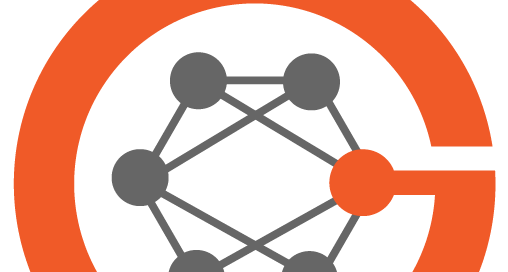
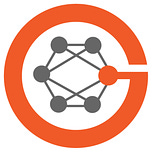
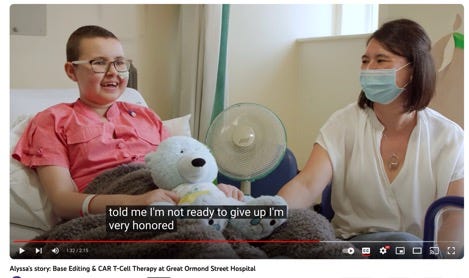
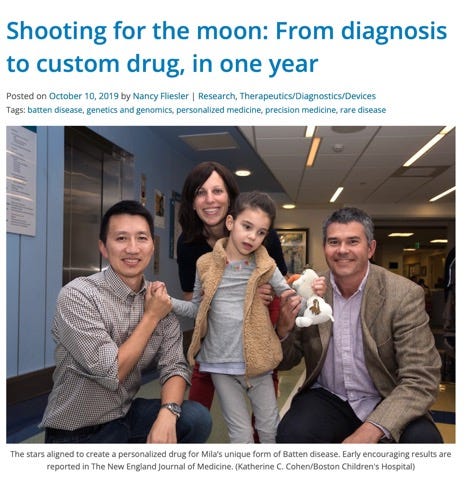

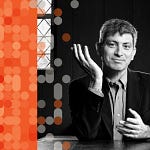





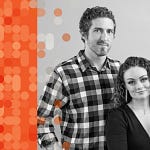

Share this post